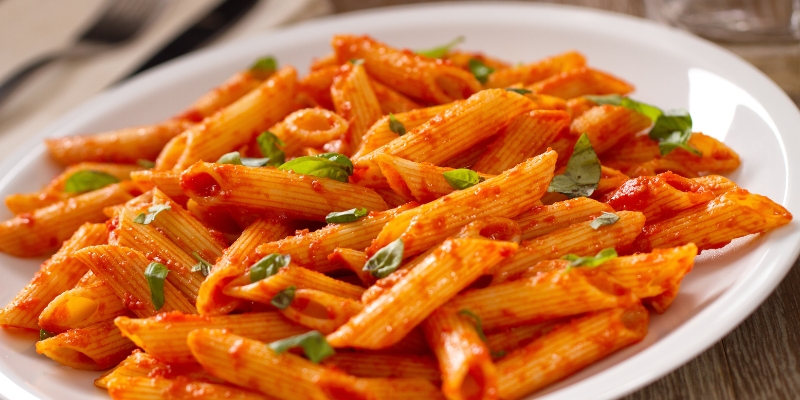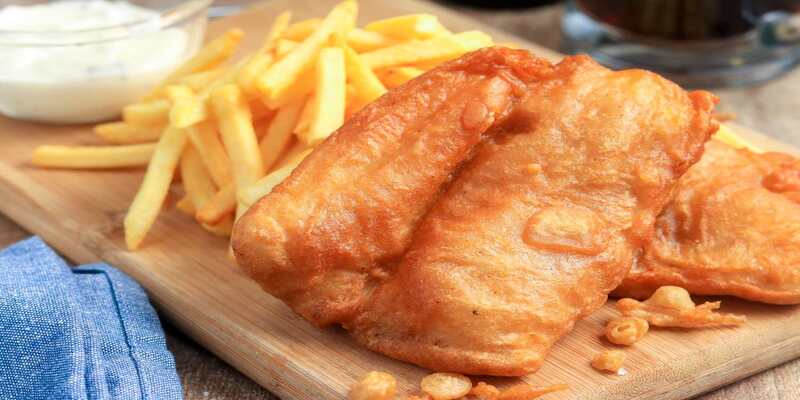Even the most straightforward pasta meal can be taken to a new level of taste and pleasure with the proper sauce. You can turn even the most straightforward noodles into a cooking wonder using the proper sauce. But making sauce for pasta involves more than just putting it over spaghetti and calling it a day. To do this job, you need to know a lot about the different parts of recipes, how to make them, and how much of each to use. There are a lot of sauces to choose from, like the standard red tomato sauce and a few white butter sauces that can be used instead.
It doesn't matter if you choose a light and airy sauce or a heavy and filling one; what matters is that you know how to sauce your pasta correctly. This piece tells you everything you need to know about putting sauce on pasta, from choosing the right shape of noodles to finding the best sauce. Get ready for a trip that will make your mouth water as we show you how to make spaghetti sauce correctly and other meals that will make your taste buds want more.

When you eat pasta with sauce, the very worst thing that could happen is:
Why do I dislike them so much? What is it about them that I don't like? This is the usual way to serve spaghetti. The dish is often served on a tray with a nest of oiled, warmed noodles and a large ladleful of sauce poured into the center of the nest to coat the noodles. Usually, a spoon is used to pour the sauce into the middle of the nest. How does this make a bad situation? Have you suddenly forgotten that you're eating a pile of pasta and tomato sauce? Does it matter that it was put together quickly at first?
Recipe for Saucing Your Pasta:
The texture and flavor of spaghetti cooked in the pan with sauce are superior to that of spaghetti served with sauce on the side, according to a blind-tasting test. You're losing out on one of life's greatest pleasures if you're not taking the time to cook your pasta correctly. On the other hand, if you polish off a jar of store-bought tomato sauce, you could feel better—exact instructions for making spaghetti sauce.
Step 1: Get started with a homemade sauce.
It would be best to always use a spicy sauce while serving pasta, except when creating a pesto-style sauce. When pasta is re-heated with cold sauce, it absorbs extra water and becomes sticky. For this reason, I like to prepare my sauce in a saucier or a large, shallow pan with sloping sides.

Step 2: Pasta should be cooked until al dente.
In another saucepan, bring two cups of salted water to a boil. Pasta water shouldn't have an oceanic saltiness to it. 1-2 tablespoons of kosher salt per quart or liter yields the optimal saltiness of 1%-2%. There should be enough liquid to prevent the spaghetti from sticking together. When I'm making pasta or fusilli, I use a saucepan or stew pan. When I make spaghetti or bucatini in a pan, I use a 12-inch pan.
The pasta may also be cooked nearly entirely in the sauce before being drained. Preparing pasta in a sauce takes more time than boiling it in water. It may be utilized to buy more time before serving the spaghetti dinner. Cooked pasta is less likely to absorb the sauce if it is oiled before serving.
Step 3: Pasta should be added to the sauce
Pasta may be transferred from the skillet to the sauce in one of two ways. It's simplest to toss the pasta right into the skillet using tongs or a metal spider with the spicy sauce, whether long and thin or short and wide. In a fine-mesh strainer or sieve, save some of the water used to cook the pasta.
Step 4: We'll pour the water over the pasta.
Water should be added to the pasta and sauce combination. This is the most crucial stage. The starchy pasta water dilutes the sauce, aids its adherence, and combines with the oil and cheese to produce a homogeneous mass. The sauce in any pasta dish, whether a basic carbonara, a complex ragù Bolognese, or a hearty marinara, should be silky and adhere to the noodles. Every time I cook pasta and sauce, I add two teaspoons of the reserved pasta water. More will be added later to ensure continuity.
Step 5: Include fat
Tomato sauce and other low-fat dishes should now include fat. A bit of high-quality fat, such as extra-virgin olive oil or butter, adds body to spaghetti sauce. No one has ever complained to the waiter, "Waiter, my pasta isn't quite moist enough"; without fat, the sauce is watery or sticky due to the carbohydrate level alone.
The excessive fat in the sauce gave it a velvety texture. The use of fat improves the flavor of meals and facilitates the delivery of fat-soluble sauce flavors. I'll add some extra-virgin olive oil or butter, depending on my mood and the sauce.
Step 6: Make good food quickly.
Let the dish boil after adding cooked pasta, a spicy sauce, the pasta water, and more fat. As the sauce reduces, a machine swirls the starchy pasta water, incorporating the oil into the sauce.
Heat the pan; the sauce will bubble up more and combine more attractively. To prevent the spaghetti from sticking together, I cook it over a very high heat and mix it often. When the sauce is too thin, I dilute it by adding additional pasta water. Great pasta requires constant experimentation. Pasta's texture changes when water is added during preparation. Have no apprehension!
Step 7: Take the dish from the hob and mix in the herbs and cheese.
When the pasta and sauce are cooked, Take the pan off the heat and add the other ingredients while stirring constantly. Adding cheese directly to well-mixed, thick recipes overheating is OK, but the cheese may clump if the sauce is dry or lacks other ingredients.
Step 8: Deck the halls.
Place the pasta and sauce on a serving dish or individual plates and heat through. Garnish with extra toppings if desired. Spice it up with freshly chopped herbs, some grated cheese, or a generous amount of black pepper. At this stage, I also pour in some fresh extra-virgin olive oil. The texture changes drastically when food cools, and what looks excellent in the pan becomes a solid mass.
Step 9: Serve at once.
Pasta is a food that nobody anticipates. The timer begins counting down immediately after adding the pasta to the sauce. Left-out spaghetti softens and continues to cook. The sauce will harden as it cools.
Conclusion:
There's more to making spaghetti sauce than just following a recipe. Learn the trade tricks that will elevate your pasta to the next level. The tastiest spaghetti sauce comes from using the proper pasta shape and boiling it to a perfect al dente. A well-balanced sauce, such as olive oil and garlic or a rich tomato-based sauce, is necessary for the pasta.
You need to know when and how to toss the pasta in the sauce so that each strand or tube gets an equal amount of sauce. An elegant touch to a meal may be as simple as adding fresh flowers, cheese slices, or extra virgin olive oil. You can make delicious, gratifying, and memorable pasta meals by following these guidelines and letting your creativity go wild. Experiment with different sauces and eat pasta the right way. All of your taste buds will thank you.




